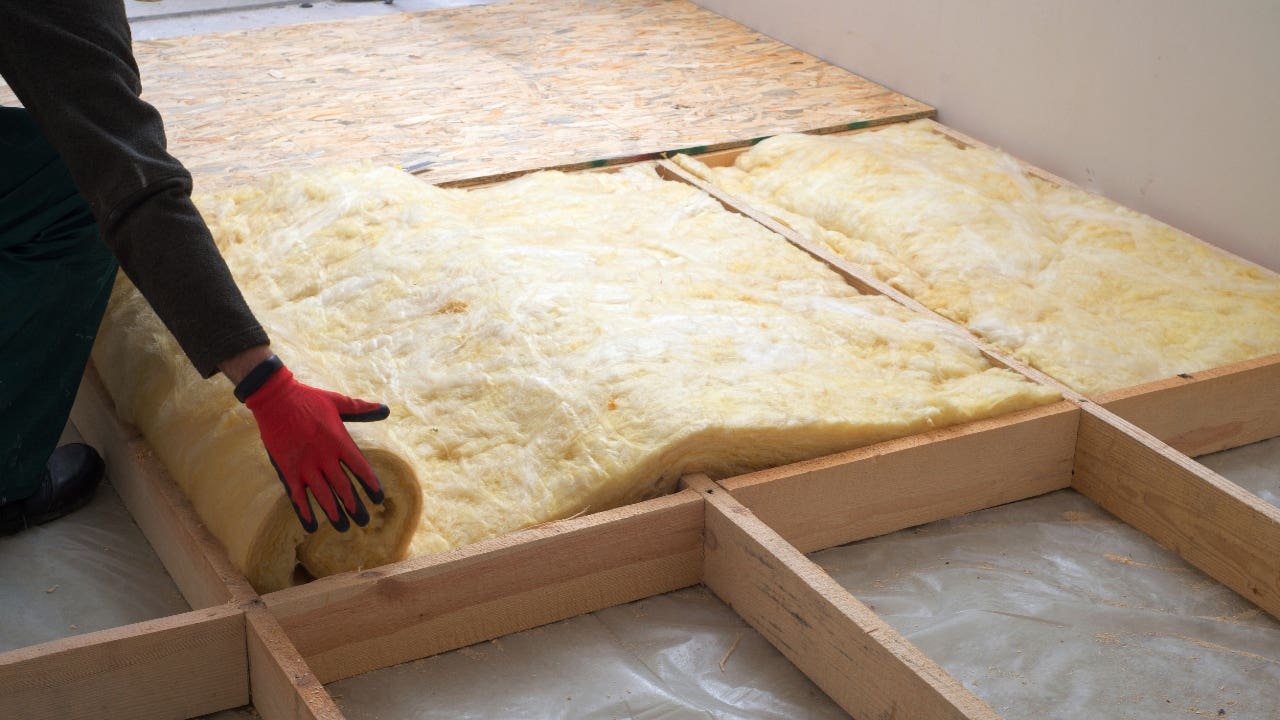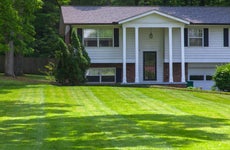What is an energy-efficient mortgage (EEM)and how can it save you money?

The Bankrate promise
At Bankrate we strive to help you make smarter financial decisions. While we adhere to strict , this post may contain references to products from our partners. Here's an explanation for .
Key takeaways
- An energy-efficient mortgage, or EEM, can help you pay for an energy-efficient home or for energy-saving upgrades to a home.
- An EEM can cover improvements such as installing energy-efficient appliances, doors and windows or replacing a furnace or water heater with a more energy-efficient model.
- Depending on how much the improvements cost, the property might require an energy assessment in order to qualify.
What is an energy-efficient mortgage (EEM)?
An energy-efficient mortgage (EEM) is a loan for purchasing or refinancing a home that meets certain energy-efficiency requirements, or for improving a home to make it more energy-efficient.
An EEM mortgage can be a conventional loan, an FHA loan or VA loan. As with other types of mortgages, the home serves as collateral for the debt.
How does an energy-efficient mortgage work?
You can use an EEM alongside another mortgage, such as a conventional loan or renovation loan, and depending on the type of EEM, can borrow up to 15 percent of the home’s appraised value to make energy-efficiency improvements.
When assessing an applicant for an EEM, a mortgage lender considers how much money the borrower stands to save on utilities by either buying or refinancing an energy-efficient home, and/or making energy-efficiency upgrades. These estimated savings are determined through an energy assessment. They can help you qualify for a larger regular loan, since the savings free up your budget for mortgage payments.
If your lender allows it, you might be able to do some of the renovation work yourself to save money, but you can’t pay yourself — you can only use the EEM funds to pay contractors or for materials. You’ll have a certain amount of time to hire the workers and complete the improvements after the loan closes, usually three to six months.
Once the improvements are finished, your lender will order an inspection of your home to verify that the improvements have been made and are in fact increasing the home’s energy efficiency.
What do EEMs finance?
You can use an EEM to purchase or refinance a home that is already energy efficient, and you can also use an EEM to fund energy efficient improvements for a new or new-to-you property.
Any improvements made must be cost-effective, meaning the price it takes to make them is equal to or less than the energy savings sums they’d yield over their lifespan. A trained energy professional also has to assess and approve any upgrades before you make them.
Ironically, not all energy efficient renovations can be financed through an energy efficient mortgage: You can only use an EEM for certain improvements. Some of the acceptable upgrades, as delineated by U.S. Department of Energy guidelines:
- Furnace or water heater replacement
- Caulking or weather-stripping
- Insulation
- Solar panels
- Duct system repairs and installations
- Certain roofing improvements
- Energy-star appliances (i.e. washers, dryers, refrigerators, dishwashers)
- Energy-efficient windows and panes
Energy-efficient mortgage requirements
If you’re planning to buy a home or refinance, you’ll need to qualify for the regular mortgage or refi first. This means meeting credit score, debt-to-income (DTI) ratio and down payment requirements specific to the type of loan you’re getting.
Then, you’ll apply for the EEM, which will be on top of your regular mortgage. You might have to meet additional credit and documentation requirements. The most important is to obtain an energy assessment, in which an energy consultant examines the home and draws up a Department of Energy (DOE) Home Energy Score Report, a Home Energy Rating System (HERS) report or other comparable report. This report contains information about potential improvements, their cost and how much they’ll save.
The energy assessment isn’t free — about $430, on average, according to HomeAdvisor — but you might be able to finance the cost of the report with your loan. You can find a local professional to do the assessment through the DOE or HERS websites.
Keep in mind: You'll typically have three to six months to complete the improvements once your loan closes.
Energy-efficient mortgage options
There are different energy-efficient mortgage programs based on loan type: a government-backed loan needs a government-backed EEM, for example. Here are the options:
Conventional energy-efficient mortgages
Conventional EEMs accompany conventional loans, including the Fannie Mae HomeStyle Energy loan and Freddie Mac GreenCHOICE Mortgage. They allow you to borrow as much as 15 percent of the home’s appraised value to make energy-efficient improvements. If you’re buying or refinancing a home, this sum is on top of whatever loan amount you obtained for the purchase or refi.
A conventional EEM might also allow you to finance improvements to safeguard against natural disasters and storms, or pay off a Property Assessed Clean Energy (PACE) loan, another kind of energy-efficient home improvement loan.
A conventional EEM works just like a conventional loan and comes with similar requirements, such as a minimum down payment of 3 percent and a debt-to-income (DTI) ratio of no more than 45 percent. The mortgage can have the traditional 30-year term or shorter duration and carry either a fixed or adjustable rate.
The Fannie Mae HomeStyle Energy loan doesn’t require an energy assessment if you’re making up to $3,500 in simple “weatherization” upgrades, such as installing insulation or a programmable thermostat, or making environmental or natural disaster repairs or protective upgrades. For the Freddie Mac GreenCHOICE program, that threshold is $6,500.
FHA energy-efficient mortgage
To accompany its FHA loans, the Federal Housing Administration (FHA) insures offers the FHA energy efficient mortgage (EEM), which can come in a 15- or 30-year term and with a fixed or adjustable rate. With an FHA EEM, you don’t need to qualify for the additional funds that’ll go toward energy-efficiency improvements, but you do need to qualify for the FHA loan first, be it a regular purchase loan (with its down payment of at least 3.5 percent) or a refinance loan.
Given the “cost-effective” rule, the amount you can borrow for energy-efficiency improvements, according to the FHA, is the lesser of:
- The cost of the improvements based on the energy assessment; or
- The lesser of 5 percent of the home’s value; 115 percent of the area median single-family home price; or 150 percent of the conforming loan limit
VA energy-efficient mortgage
The Department of Veterans Affairs also has a version of an energy-efficient mortgage. This EEM is available to eligible military service members, veterans and surviving spouses, and provides up to $6,000 for energy-efficiency improvements on top of the VA loan for a purchase or refinance. You might have the option to obtain more than $6,000 with a VA EEM, but this isn’t as common, as you’ll need approval from both the VA and the lender to do it.
If the cost to make the improvements is $3,000 or less, you won’t need to do an energy assessment, but will need to provide contractor estimates. As with other types of EEMs, the projected savings from the energy-efficiency improvements need to outweigh the costs.
If you get a VA EEM, you also have to complete the improvements within six months of closing the loan.
Energy-efficient mortgage lenders
You can get an EEM through many of the same lenders that offer mortgages, including banks and credit unions. If you’re already working with a financial institution for a loan, ask about whether it offers EEMs.
Many states also facilitate programs for green mortgages, and your state housing finance agency might be able to direct you to lenders that offer EEMs. You can find your state’s housing authority in this Bankrate guide.
Pros and cons of energy efficient mortgages
Energy efficient mortgages can be a helpful way to fund certain home improvements and renovations, but they may not be the best loan type for everyone. Consider these pros and cons:

Pros
- Financing for a variety of “green” improvements
- Able to combine with other mortgage programs
- Save on energy bills

Cons
- Cost and hassle of energy audit/assessment
- Relatively low loan amounts
- Tight timeframe for making improvements
Is an energy-efficient mortgage right for you?
EEMs are best for homeowners or homebuyers who want to reduce their energy costs in the short run and increase their home’s value in the long run. For homebuyers, they can be a convenient way to deal with a purchase and renovations at the same time. Given the tight borrowing limits, though, EEM refinances are best suited to homeowners whose projects don’t need a large amount of money, or have additional means for making the upgrades.
Alternatives to an energy-efficient mortgage
If you want to make energy-efficiency improvements to your home but need to borrow more than you can get with an EEM — or don’t want to deal with the process of an energy audit — here are some other options:
- Cash-out refinance: If you’ve owned your home for a while, you might have significant equity in the property that you can leverage for home improvements. Generally, a cash-out refinance is a good idea if you can afford the closing costs, lower your interest rate and use the funds to add value to your home or make headway with other financial goals.
- Home equity loan: A home equity loan functions similarly to a mortgage, allowing you to borrow money in a lump sum — with your home as collateral — and comes with a fixed rate and a term of up to 30 years. You can use the money for almost anything, including energy-efficiency upgrades.
- Personal loan: Personal loans are more expensive than home equity loans and mortgages in general, but they don’t rely on you having equity in your home and don’t put your home on the line as collateral. They’re also highly flexible, so you can use them to make home improvements. Many lenders won’t let you borrow large amounts, however, which could make it difficult to finance more expensive energy-efficiency improvements like solar panels.
Energy-efficient mortgage FAQ
-
Yes. An energy-efficient mortgage is often combined with other types of financing, such as the FHA 203(k) rehab loan.
-
The energy-efficient mortgages in this guide are for residential properties. There are also green financing options for commercial properties, such as Commercial Property-Assessed Clean Energy (C-PACE) loans.
-
The same improvements that qualify you for an energy-efficient mortgage might also qualify for energy-efficiency federal tax credits or rebates. Likewise, you could qualify for covered improvements independently of an EEM and the projects it might fund.
Related Articles



Where to get a home equity loan: finding the best lender for your needs
